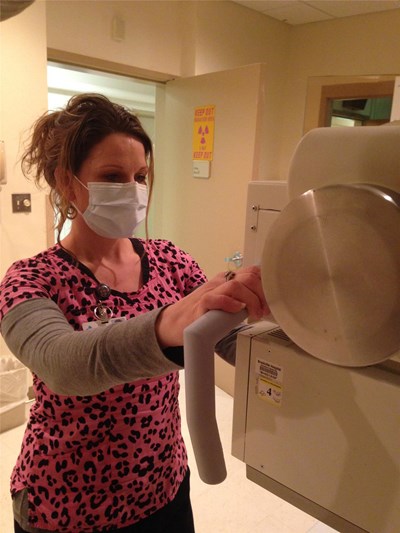The holiday season is over, but there is another season that is not.
It’s influenza, or flu, season, and it’s not over, yet.
Officials expect flu activity to pick up in the next few weeks, according to the Centers for Disease Control.
“We haven’t been seeing many case of the flu so far this season,” John Bacher, RN, director of the Emergency Department at Penn Highlands Clearfield, said.
“It is believed that the extended warm weather has been playing a big part in the reduction of flu cases. With the recent change in weather to more winter like conditions, the trending flu case may change.”
This year’s slow start to the flu season isn’t out of the ordinary as other flu seasons have had the same pattern, the CDC said.
The last three years’ flu seasons were earlier than normal, so this one feels late. In the past, the flu season peaked in February and March.
That is why Penn Highlands Healthcare reminds anyone who hasn’t gotten a flu shot to get one now.
Flu shots are recommended for anyone 6 months of age and older, especially high-risk individuals such those with certain chronic medical conditions, such as asthma, diabetes or heart disease; pregnant women, those age 65 or older and young children.
Vaccination can reduce flu illnesses, doctors’ visit and missed work and school due to flu, as well as prevent flu-related hospitalizations. It takes about two weeks after vaccination to have its complete effects. At Penn Highlands Healthcare, the recommendation to get a flu vaccine is taken very seriously. All personnel working in a Penn Highlands facility are either immunized against influenza on an annual basis or using a surgical face mask during flu season for any contact that requires being within 6 feet of another person – whether a patient, co-worker or visitor, according to Cathy Senior, director of Penn Highlands DuBois and Penn Highlands Brookville Employee Health Services.
“It is important for our staff to get vaccinated to avoid infecting other staff members and most importantly our patients who already have health problems and most likely immunocompromised,” Senior said.
“The reason we have unvaccinated staff wear the mask is because most healthy adults may be able to infect other people beginning one day before symptoms develop and up to five to seven days after becoming sick. Children may pass the virus for longer than seven days. Symptoms start one to four days after the virus enters the body. That means that you may be able to pass on the flu to someone else before you know you are sick, as well as while you are sick. Some people can be infected with the flu virus but have no symptoms. During this time, those persons may still spread the virus to others,” she said.
The mode of transmission for the flu is from person to person. When an infected person coughs or sneezes near a susceptible person, the droplets can travel up to 6 feet away.
Transmission can also occur from touching a virus contaminated surface and then touching your face, such as your mouth or nose. Influenza viruses can last from two to eight hours on surfaces.
If you are sick: The common cold and the flu can often look alike, so how can you tell the difference? Having a stuffy nose, sneezing and a sore throat are more indicative of a cold, while symptoms like fever, headache, body aches, weakness, fatigue, and extreme exhaustion are rarely signs of a cold but are common indicators of the flu. If you do get the flu, stay home and get plenty of rest. Don’t spread your illness at work, school, church, the mall, the grocery store or anywhere. Wait until you have been fever free for 24 hours – without taking fever-reducing medicines – to return to work or school or to attend any public function. Remember, no medication makes you less contagious.
You can treat flu symptoms with or without medication. Over-the-counter medications may relieve some symptoms. If you have other health issues, your health care provider may prescribe antiviral medications to make your illness milder and prevent serious complications. Antibiotics do not help fight viruses, but if your flu has allowed you to get a bacterial infection – such as a lung, ear or sinus infection – you may get an antibiotic.
Drink plenty of clear fluids to stay hydrated. If you have a fever, put a cool, damp washcloth on your forehead. Use a humidifier to help breathe better. Gargle with warm salt water for a sore throat, and cover yourself with warm blankets for the chills.
Though having the flu doesn’t always mean a visit to the Emergency Department, there are signs to be concerned about, Bacher said. They are:
- Fast or troubled breathing or shortness of breath;
- Bluish or gray skin color in children;
- Not drinking enough liquids, especially in children;
- Severe or persistent vomiting;
- Not waking up or interacting, especially in children.
For all other issues, call your family doctor to discuss symptoms and for advice.



